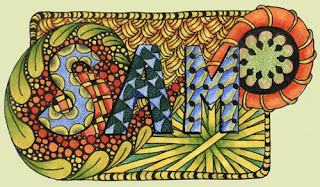
Flower Pins
December 2011
These flowers were hooked on linen. The petals began as 3" x 1/2" (or a little more) strips of hand dyed wool. I folded the strips in half and cut them into petal shapes. I like the thick strips of wool as the flower has more dimension. The two flowers on the right have hooked centers, the two on the left have Italian buttons as centers. This is proddy hooking, however, I pulled the petals through the linen from the front using my regular hook, first pulling through one side of the petal then moving over a couple holes and pulling through the other end. After the petals are completed, I hook in three green petals that serve as leaves.
These were finished by coating the back linen with glue so I could cut out the flower without the linen unraveling. I then covered the back with a piece of wool on which I had already stitched a pin back.



















